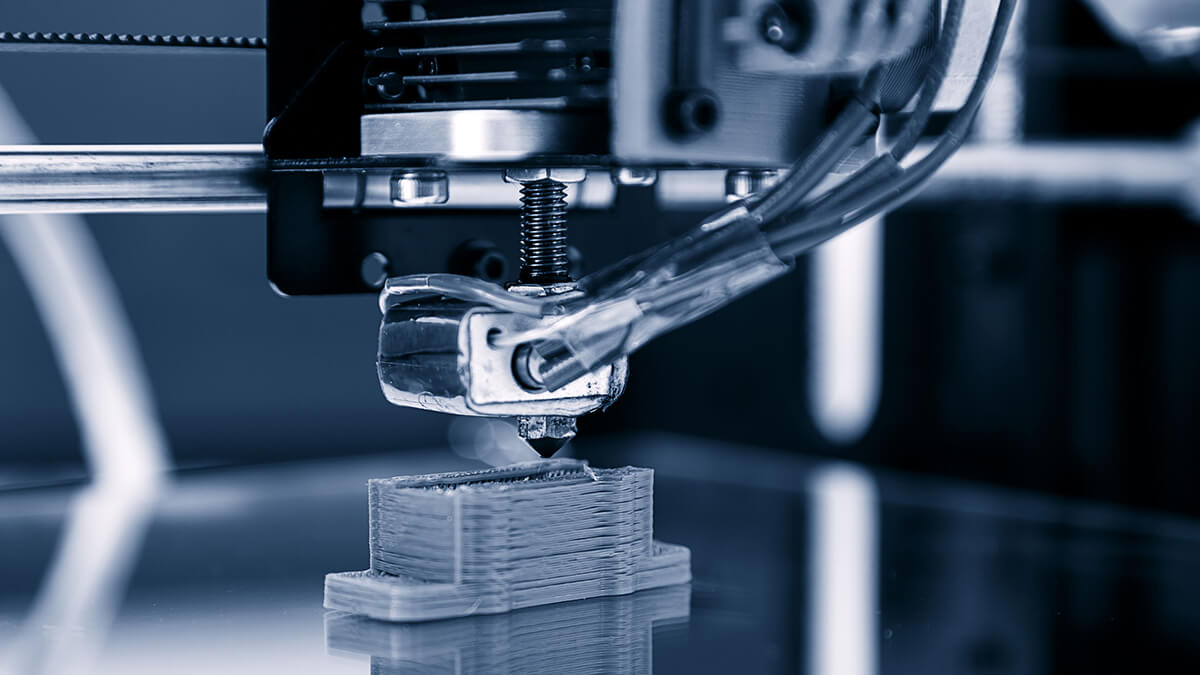Additive manufacturing has a great future ahead of it. The current development of additive manufacturing has already surpassed the predictions made in studies carried out in previous years. Renowned research institutions such as ETH Zurich are convinced that 3D metal printing will become increasingly important in mechanical engineering and toolmaking.
The aim is for additive manufacturing to become fast and precise enough to be suitable for series production. At present, the possibilities of additive manufacturing still compete with CNC-controlled machines, which are still better suited for series production. The long-term goal is for 3D metal printing of complex objects to overtake CNC in the future.
Additive manufacturing processes applications
The areas of application of additive manufacturing processes can be divided into three categories. These applications are often mistakenly equated with the technologies:
-
Rapid Prototyping: Additive manufacturing is used to enable the rapid construction of a model. There should be physical models available at an early stage in the development of a product. Rapid prototyping allows these models to be produced in a particularly reliable manner.
-
Rapid Tooling: In Germany, small series tools for injection molding and metal casting are usually produced by means of 3D metal printing.
-
Rapid Manufacturing: This involves the rapid production of objects that are used as end products or components. Unlike rapid prototyping, no models are generated, but ready-to-use parts.
Pros and Cons of Additive Manufacturing
What are the advantages of additive manufacturing?
- Individualization
- Greater Freedom of Design
- Speed
- No tools and no molds required
Additive manufacturing also has the following disadvantages:
- Unavoidable Finishing
- Limited suitability for industrial mass production
If an object requires a certain surface quality, post-processing is inevitable. The same applies if certain tolerances are to be maintained. There is still no standard for this (ISO/ASTM 52195 could, however, be further elaborated in a corresponding way). Especially in the case of 3D metal printing, finishing can be extremely time-consuming.
For instance, 3D metal printing usually allows a maximum of two objects to be produced in one machine at the same time. Conventional manufacturing methods, on the other hand, allow much larger quantities to be produced. For industrial mass production, additive manufacturing is therefore only suitable to a limited extent. The best example of this is automotive production: Theoretically, an entire vehicle could be produced by additive manufacturing. Due to the large number o components, however, this would be far too expensive. For this reason, most components continue to be manufactured with conventional methods.
Additive manufacturing technologies
Sintering
Sintering is the process of creating a solid mass using heat without liquefying it. Sintering is similar to traditional 2D photocopying, where toner is selectively melted to form an image on paper.
Direct Metal Laser Sintering (DMLS)
Within DMLS, a laser sinters each layer of metal powder so that the metal particles adhere to one another. DMLS machines produce high-resolution objects with desirable surface features and required mechanical properties. With SLS, a laser sinters thermoplastic powders to cause particles to adhere to one another.
Direct Metal Laser Melting (DMLM) and Electron Beam Melting (EBM)
By contrast, materials are fully melted in the DMLM and EBM processes. With DMLM, a laser completely melts each layer of metal powder while EBM uses high-power electron beams to melt the metal powder. Both technologies are ideal for manufacturing dense, non-porous objects.
Stereolithography (SLA)
Stereolithography (SLA) uses photopolymerization to print ceramic objects. The process employs a UV laser selectively fired into a vat of photopolymer resin. The UV-curable resins produce torque-resistant parts that can withstand extreme temperatures.
Additive manufacturing applications industry
Additive manufacturing is already used to produce an impressive array of products -- everything from food creations to jet engine parts.
Aerospace:
AM excels at producing parts with weight-saving, complex geometric designs. Therefore, it is often the perfect solution for creating ight, strong aerospace parts.
In August 2013, NASA successfully tested an SLM-printed rocket injector during a hot fire test that generated 20,000 pounds of thrust. In 2015, the FAA cleared the first 3D-printed part for use in a commercial jet engine. CFM's LEAP engine features 19 3D-printed fuel nozzles. At the 2017 Paris Air Show, FAA-certified, Boeing 787 structural parts fabricated from titanium wire were displayed, according to Aviation Week.
Automotive:
CNN reported that the McLaren racing team is using 3D-printed parts in its Formula 1 race cars. A rear wing replacement took about 10 days to produce instead of five weeks. The team has already produced more than 50 different parts using additive manufacturing. In the auto industry, AM's rapid prototyping potential garners serious interest as production parts are appearing. For example, aluminum alloys are used to produce exhaust pipes and pump parts, and polymers are used to produce bumpers.
Healthcare:
At the New York University School of Medicine, a clinical study of 300 patients will evaluate the efficacy of patient-specific, multi-colored kidney cancer models using additive manufacturing. The study will examine whether such models effectively assist surgeons with pre-operative assessments and guidance during operations.
Global medical device manufacturing company Stryker are funding a research project in Australia that will use additive manufacturing technology to create custom, on-demand 3D printed surgical implants for patients suffering from bone cancer.
In general, healthcare applications for additive manufacturing are expanding, particularly as the safety and efficacy of AM-built medical devices is established. The fabrication of one-of-a-kind synthetic organs also shows promise.
Product Development
As the potential for AM's design flexibility is realized, once impossible design concepts are now being successfully re-imagined. Additive manufacturing unleashes the creative potential of designers who can now operate free of the constraints under which they once labored.
One of the most important advantages if that objects can be customized as desired. For example, it is possible to produce walls with varying thicknesses, very fine structures or very small dimensions. Furthermore it is possible to realize complex geometries using 3D metal printing, which would not be possible using other manufacturing processes. This includes, for example, cavities, undercuts, channels with arches or overhangs. It used to be the case that the design of an object had to follow the limitations of the manufacturing possibilities. This constraint is largely eliminated with additive manufacturing and therefore it is a great advantage, especially in 3D metal printing. In addition, the additive manufacturing of an object usually only takes a few hours, whereas other manufacturing processes take days or weeks.














